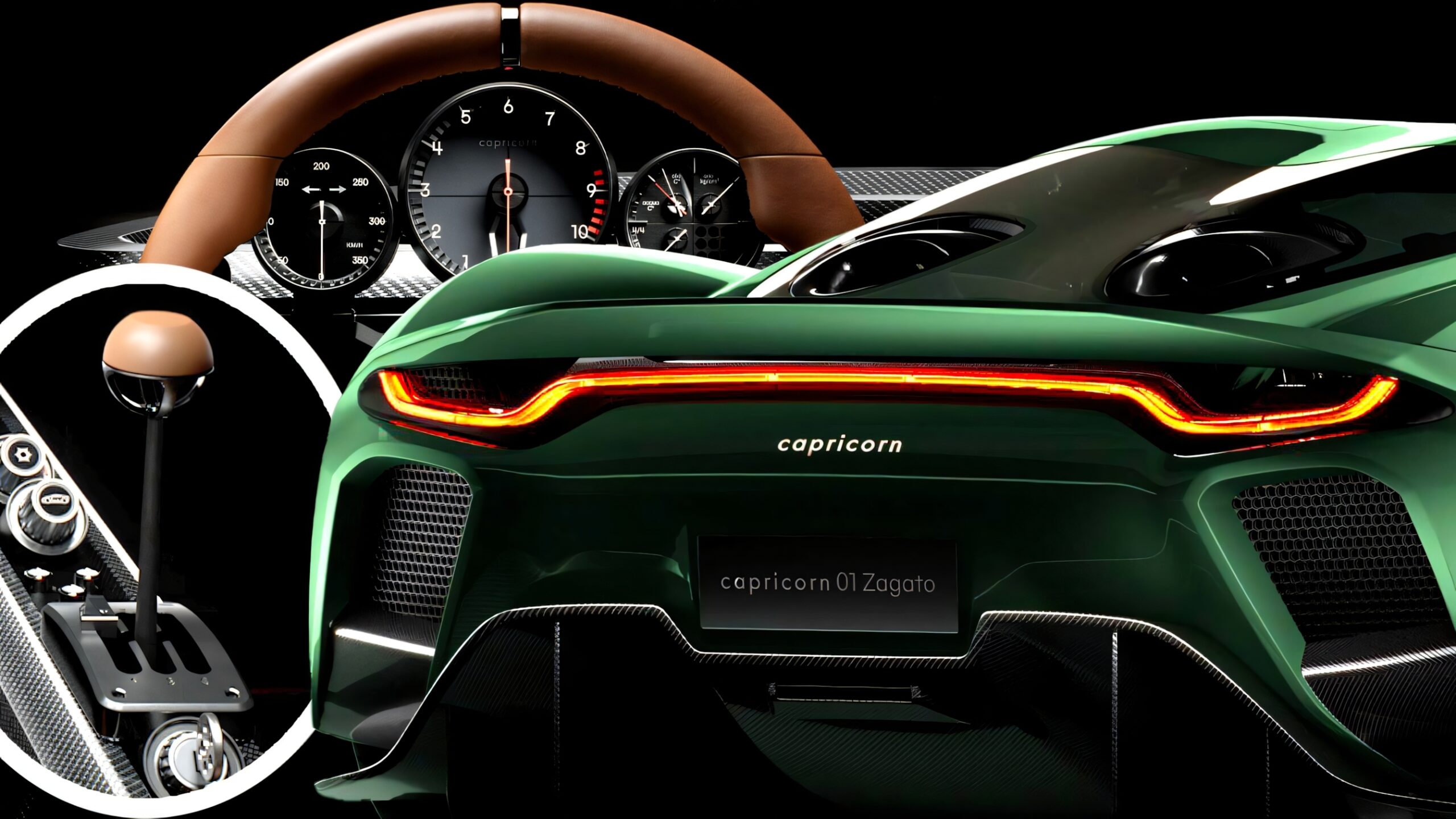Capricorn’s $3.15M 01 Zagato brings analog thrills back with a manual V8, handcrafted design, and a focus on pure driving emotion
Even in a world overflowing with limited-production supercars and hypercars boasting astonishing numbers and intricate design, there’s always space for another to make its mark.
Enter the 01 Zagato, an “ultra-driver-focused” creation conceived by Germany’s Capricorn Group and shaped by the storied Italian design house. It stays refreshingly pure, pairing a non-electrified V8 with a manual gearbox.
More: Your New Favorite Supercar Weighs Less Than A Miata And Has A Manual V12
While this is the first model to wear the Capricorn badge, the company’s background in performance engineering runs deep. Its lightweight components have proven their durability across some of the toughest motorsport arenas, supporting teams such as Porsche in LMP1, Peugeot Sport in Le Mans and Dakar, Mercedes, Lotus, and Caterham in Formula 1, and Volkswagen in WRC.
Capricorn Founder and CEO Robertino Wild is also a close friend with Zagato President Andrea Michele Zagato, resulting in a project that combines “German engineering discipline with Italian design flair”. Their goal was to create a road-legal hypercar that is “meant to be driven, felt, and remembered”.
Function Meets Heritage
The exterior carries signature Zagato touches such as the double-bubble roof, almond-shaped headlights, and sculpted fenders. Yet its side profile hints at Ford GT inspiration, the wraparound glass with a single wiper brings a Koenigsegg-like silhouette, and the slim LED tail lamps subtly recall Rimac’s minimalism.
Rather than relying on active aerodynamic trickery, the 01 Zagato uses its carefully shaped intakes and outlets to deliver consistent and predictable downforce. The focus was on making the car approachable for skilled enthusiasts and accessible for drivers without racing experience.
A Timeless Cabin
The interior was designed by Capricorn itself. The centerpiece is a cluster of analog instruments behind a round steering wheel, dominated by the central rev counter. There’s no infotainment screen to date the layout, just a small display for the rearview camera that retracts when not needed.
That’s something we mentioned in a recent QOTD, comparing the post-Quartz Crisis watch world to what’s unfolding with digital displays today. Back then, mechanical watches made a comeback as luxury status symbols, and it’s hard not to see history repeating itself. The more screens invade our mainstream dashboards, the more the pricey stuff seems to circle back to old-school analog dials.
QOTD: We Need To Talk About The Screen Overload In Cars. How Do You Feel About It?
Switchgear is machined from solid titanium and aluminum, paired with generous use of exposed carbon fiber, Alcantara, and Connolly leather. The fixed seats feature adjustable cushioning, while the steering column, pedal box, and manual gear lever can all be fine-tuned to achieve the ideal driving position.
The interior, Capricorn notes, can accommodate a wide range of body types and even includes a 110-liter frunk for luggage.
Analog Driving Experience
Under the carbon bodywork sits an LMP1-style monocoque chassis, which is also made of carbon fiber, as are the front and rear subframes. The suspension comprises double wishbones and pushrod Bilstein dampers with three selectable driving modes (Comfort, Sport, and Track) and a four-wheel lift system.
More: What’s It Really Like Driving Your First Ever Supercar?
An electric power-assisted steering setup provides easy maneuverability at low speeds, then disconnects at higher velocities for a direct, mechanical feel. The 21-inch wheels, available in lightweight alloy or carbon fiber, hide Brembo carbon-ceramic brakes.
Ford Power
And that leads us to the powertrain, which goes against the trend of electrification. The mid-mounted supercharged 5.2-liter V8 is based on a Ford engine that has been further developed by Capricorn with various bespoke components and custom tuning.
The result is a powerhouse delivering over 888 hp (662 kW / 900 PS) and 1,000 Nm (737.6 lb-ft) of torque, all pushing a car that weighs less than 1,200 kg (2,646 lbs) dry, which is about the same as a top-end Miata RF with the retractable hardtop.
More: The World’s Most Famous Design House Just Let AI Take The Pencil
All that power is sent exclusively to the rear wheels through a five-speed dog-leg manual gearbox, a choice that preserves the hypercar’s analog character. According to Capricorn, the 0–100 km/h (0–62 mph) sprint takes less than three seconds, with top speed pegged at 360 km/h (224 mph).
The 01 Is Just The Beginning
Production will be limited to just 19 units, each hand-built in Germany and sold in the EU, UK, Switzerland, Japan, Mexico, Canada, and the Middle East. Pricing starts at €2.95 million ($3.15 million) before taxes, placing it alongside offerings from Pagani, Koenigsegg, and Gordon Murray Automotive.
Capricorn plans to expand its Nurburgring facilities in 2026, increasing the production capacity. This will allow them to handle future projects in batches of 100-200 vehicles per year, opening the door to more supercars and hypercars.
“This project is not a one-off – it is the beginning of a new lineage of Capricorn-branded high-end cars”, Wild said. “And in addition, we are also open to taking on limited-series contracts for other OEMs and building fully bespoke hypercars for private clients.”
A post shared by capricorn CAR (@capricorn.car)
Google News
MSN Start
Thanos Pappas, a product design engineer by trade, has been wading through automotive journalism for… Read full bio












